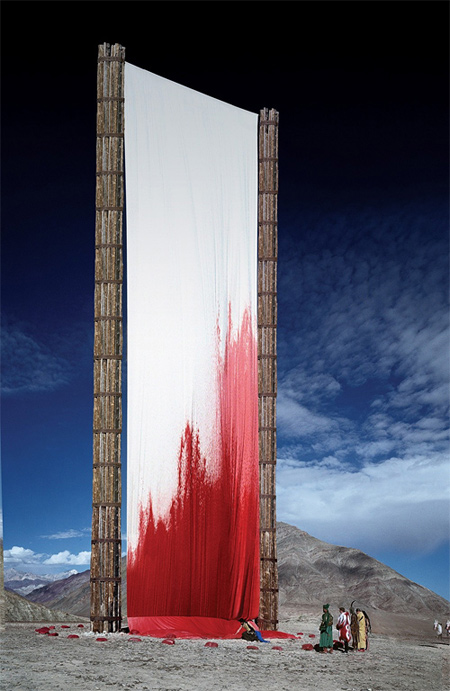I know I’m a philistine, but some movies just work best chopped up into bite-sized pieces. They might not work great as a whole, but watched in 20-40 minute chunks over the space of a few evenings, they go down a lot easier.
The Emperor’s Naked Army Marches On is a Japanese documentary about Kenzo Okuzaki, who was a soldier in New Guinea in World War II, where he was one of only 30 survivors of his 1000-man unit. The events seem to have left him a little unhinged, and after 40 years in and out of prison, filled with a burning desire to extract the truth, he sets out to interview the other survivors. The doc unfolds as a series of long interviews with each of the survivors, as Kenzo uses a combination of imploring, cajoling, rudeness and direct accusations. When that doesn’t work, he starts (literally) beating it out of them, leading to the bizarre sight of two old men wrestling around while cops in Mickey Mouse gloves ask polite questions. Piece by piece a story comes out, of illegal executions, starvation and cannibalism, and the very strange Kenzo Okuzaki starts to make sense. In fact, the more you learn about what happened, the more it seems odd how well-adjusted the other survivors are. I think watching the whole thing at one time would be gruelling, but watching one or two interviews at a time, it’s fascinating. It’s not just the story of Kenzo Okuzaki, it’s also a proxy for the story of how Japan itself came to deal with its imperial wartime adventures, and neither story is a happy one.
If TENAMO is too much medicine to take all at once, The Fall is too much sugar. It’s the labour of love of the uni-named commercial and video director Tarsem, made largely with his own money, between paid work. It’s a fantasy emerging from a story told by an injured stuntman to an immigrant girl in a hospital in 1915 California. He tells her the simple story of a group of heroes on a quest for revenge, but filtered through her imagination, it becomes something strange and exotic — an aside about native American Indians becomes confused with the culture of a friend from India, for example. The story owes a lot to films like The Wizard of Oz, The Adventures of Baron Muchausen and The Princess Bride, with a bit of El Topo and Prospero’s Books thrown in. But it also contains some jaw-dropping visuals, incredibly, achieved without the use of CGI. Instead, Tarsem uses art direction, landscapes from around the world, and brilliant cinematography to create some of the most stunningly beautiful images I’ve ever seen.
The only problem is, stunning beauty pretty quickly turns tedious. I don’t know if it’s that you need the contrast of beauty and the everyday, or that it’s just the inability of my imagination to absorb something so rich, but I soon started to feel the guilty aesthetic boredom I feel at art galleries. What I did find, though, was that by breaking it up over several days, and stopping when my interest was flagging, The Fall became a really unique and rewarding movie experience. Actually, I wish I could do that with art galleries — I’d probably appreciate art a whole lot more if I could. Philistine I may be, but if that’s the cost of maximizing utility, I’m happy to pay it.
